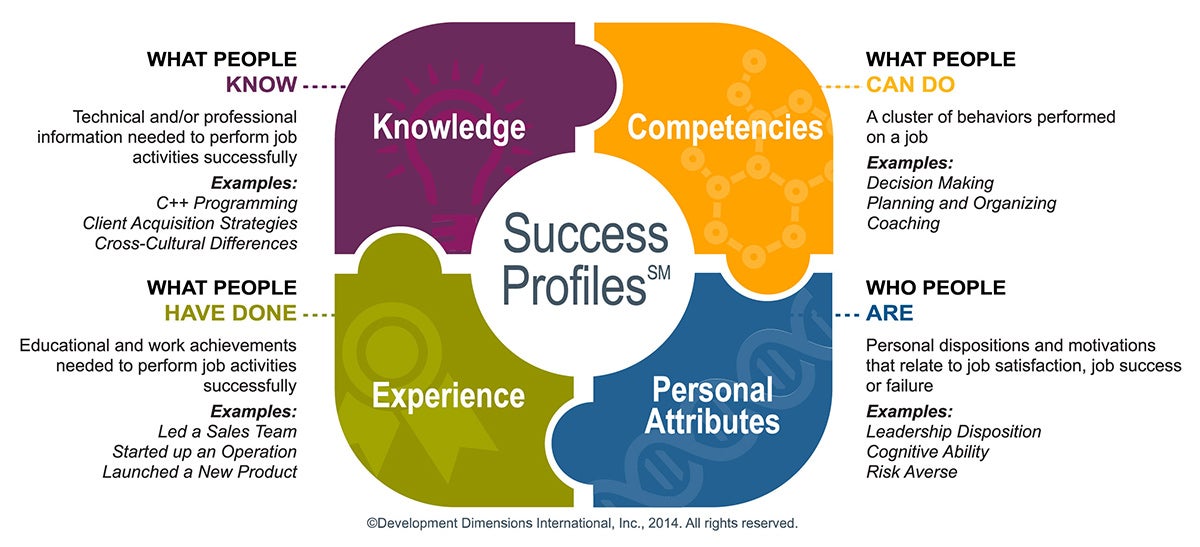There are many home improvement shows that encourage you to renovate your bathroom by yourself. There are also thousands of ideas on Pinterest for making intricate cakes for your kid’s upcoming birthday party. It seems like everyone is on a mission to do-it-yourself (DIY)! While the concept of DIY has a place within the walls of your home, it can have unintended consequences at work when it comes to hiring. I’ve seen companies that take a DIY approach make costly and common interview mistakes.
TV episodes and Pinterest showcase successful DIY projects, but "Pinterest fails" show the dark side of DIY. Often comical, these articles reveal relatively low-risk DIY fails: A dining room chair reupholster gone horribly wrong. What should be a happy little snowman cake that instead resembles the abominable snowman.
Companies who use DIY interviewing and hiring tactics can find themselves in a much riskier situation. Because after all, interviewing is expensive. The average cost per hire, just to get someone onboard, is more than $4,000 for employers!
But if poor interviewing results in a company hiring the wrong person, it can be even more expensive. Turnover costs can range from 30 to 50 percent of the annual salary to replace an entry-level employee. These costs skyrocket to as much as 400 percent of the salary of a high-level or highly specialized employee.
Don’t open up your company to the high costs that result from hiring the wrong people. Here are three common interview mistakes I’ve seen DIY interviewers make time and again. The good news is companies can easily avoid these mistakes.
Mistake #1 – Relying on intuitive but incomplete or inaccurate criteria for what success looks like.
I’ve worked with quite a few organizations where a new, well-meaning CEO is appointed. He comes in and tells HR, “Here’s what I think we need to communicate about what it takes to succeed here.” It often comes in the form of a list of characteristics for job success that has a certain intuitive appeal. HR feels compelled to use this as a guide for their hiring process.
The HR team may assume the CEO is not open to revision, so they adopt a model that’s often incomplete and imprecise. That is, it doesn’t assess the things they really want and need to know about candidates. What can result is a “homegrown,” highly specialized model that’s hard to work with. Competencies, and other criteria, are redundant, repetitive, and reductionist.
When competencies aren’t clear, they’re likely to be confused, misinterpreted, or even completely ignored by hiring managers. Interviews then rely too heavily (or entirely) on the left side of the Success ProfileSM. The Success Profile illustrates the four sources of information DDI research has shown organizations must have about candidates to make the best hiring decisions.
When organizations only focus on the left side of the Success Profile—knowledge and experience—they’re getting useful information about candidate qualifications. But by taking this approach, what is often missing is insight about the quality—the breadth and depth—of that experience and the candidate’s actual capability.
Now, when companies interview candidates for the “can do” and “want to” components (the right side of the Success Profile), they get closer to understanding the entire picture of the candidate.

Here’s an example. Let’s pretend you need to hire someone who has experience establishing a department budget. The candidate lists budget management as a skill on his resume. He even tells you in the interview, “Yes, I have 10 years of experience managing budgets.”
But when you start to ask him behavioral interviewing questions such as, “Tell me about a time when you discovered a budget discrepancy and what you did about it,” you start to understand what this candidate actually has done.
Based on the answer, you learn if the person knows how to prioritize effectively and can make good budgetary decisions. With this behavioral data, your confidence level in this person’s experience will go up or down.
The other element on the right side of the Success Profile involves understanding a person’s job fit. This is the extent to which a person is going to like the work and the organization’s values.
For example, many people are attracted to sales positions because they think it’s the best path to making good money. What they are less aware of is what goes into prospecting, mobilizing resources to deliver what they sell, and all the rejection. Once they get into the role, they may realize, “Ugh, I hate this type of work!” Motivational fit answers the question, does this candidate want to do this job?
While the left side of the Success Profile gives you important information on a person’s experience and technical knowledge, it’s not enough to understand a person’s true capability. Organizations that make common interview mistakes focus primarily on the left side of Success Profile and overlook the right side. They don’t find out if the candidate both can and will do the work.
These DIY organizations then end up spending a lot of time and resources trying to overcome this “misfit” between the requirements of the job and what people like to do. Problems of dissatisfaction, unwanted turnover, and team dysfunction occur when people can do the job but don’t actually want to do it.
One of my favorite lines about this says it best: “If the job is to get nuts from a tree, it’s easier to hire a squirrel than train a duck.”
Mistake #2 – Creating an interviewing system that’s not clear to hiring managers.
Because the “homegrown” models I refer to above are incomplete, complex, and maybe even confusing, hiring managers never fully use them. And because they don’t use them, hiring managers go off and create their own approach. This DIY approach to interviewing can result in the use of an inconsistent system that’s ripe for bias.
When consistency in the hiring process is lacking, hiring managers are left to define what success looks like from only their own perspective. When they don’t think carefully about what the job requires, or consider others’ perspectives, their own bias can start to fill in the gaps for what success looks like.
An example is this notion of assessing someone's communication. The interview is a good place to assess communication in terms of the isolated behavior itself.
Someone who is conveying his or her ideas in a clear, concise, and engaging manner, and actively listens, should be assessed as a good communicator. But the problem is that interviewers can then consciously or unconsciously assume that just because the candidate is a good communicator, the candidate is also collaborative, a good coach, and a good influencer. The list can go on and on.
Let’s say several interviewers agree that a candidate with good communication skills is also going to be a good coach. They’ve also decided that being a good coach is a requirement for this particular management position.
During the interview, the interviewers hear candidates describe their opinions about what good coaching would look like in a well-spoken, well-thought-out way. It seems ridiculous to equate good communication skills with coaching or a myriad of other competencies. However, I’ve seen many companies fall prey to this faulty way of reasoning. It’s like the difference between food looking good and actually being tasty.
Common interview mistakes occur when interviewers don’t get data about candidates’ actual performance in competencies that are required for the job. This puts the company at risk of hiring underperformers. And this is risky because it could take much longer for poor performers to get up to speed.
It’s frustrating for the company to have to let people go eventually. It’s also expensive when the cost of interviewing is considered and perhaps even the costs of failed training attempts. Not to mention, people who are hired for a role where they’re struggling from the get-go, aren’t likely to stay.
I’ve also seen many times where companies introduce biases when they establish requirements that dramatically narrow the field. They’ll say, “We can only hire people with experience in our industry because those are the only people who can succeed here.” The consequence with these types of biases is that companies make it much harder to find candidates because they rule out a whole swath of people that might have been viable.
Mistake #3 – Overlooking the importance of candidate experience.
All too often, employers turn candidates off by treating the interview process as a one-way buying decision. This can happen because they simply don’t think of candidate reactions as important.
One company I worked with sought to hire salespeople purely on whether they would be assertive or aggressive enough. During their interviewing process, they went to unusual and inappropriate lengths to get candidates to prove they would aggressively pursue their goals (and not be pushovers).
They sent hiring managers to hotel rooms and invited candidates to the room for the interview. When the candidates knocked on the hotel room door, the interviewer yelled, “Go away!” If the candidate left, they were screened out! The company thought if candidates weren’t aggressive enough to question why they were being sent away from the interview, they wouldn’t be a good salesperson.
Admittedly, this is an extreme example, but what kind of messages do companies send to candidates with an interview experience like this one? Candidates reasonably see the selection process as a reflection of the company. They may even start to think the company would be a pretty wonky place to work.
Candidates may also think the organization is inconsiderate in how it treats its people. Some will equate their poor interview experience to the fact that the organization has a negative culture. And increasingly, candidates who feel their interview experience was bad will tell their story on social media.
Negative interview experiences can be damaging to the organization’s employment brand. This can cause others not to want to interview with the company, let alone work there.
When companies provide a ridiculous candidate experience, they also risk immediately driving away high caliber folks from the pool. Even candidates who make it inside the hotel room may be already so turned off by the experience that they decide to withdraw from the selection process.
When companies use a well-thought-out and easy-to-understand process, candidates will feel more comfortable. They will be more likely to leave the experience with positive feelings. When a candidate has a positive experience, it reinforces the organization’s employment brand. And, of course, when candidates are comfortable, they are more forthcoming with information (which leads to a more productive interview). People who go through a selection process they feel is serious will feel flattered when they get an offer.
Ultimately, candidates do care if the organization trying to hire them really tries to fully understand their capabilities. Providing candidates with a poor interviewing experience conveys a lack of professionalism. It’s also one of common interview mistakes I see most often.
How to Avoid Common Interview Mistakes
Many common interview mistakes happen because interviewers are taking a casual or DIY approach to interviewing. They also can happen because interviewers are lacking or not applying the proper skills, unconsciously or consciously allowing bias to creep in, ignoring the candidate experience, or even just because they’re bad at interviewing. And, of course, some interviewers are better than others, just as some managers drive better outcomes than others and some salespeople generate more sales than others.
However, better interviews aren’t always just about the ability and behavior of individual interviewers. It’s also about what organizations can do to help interviewers become and stay effective. And it’s also about the process and tools interviewers have at their disposal to ensure they get the most out of the interviews they conduct.
Organizations of any size can benefit from establishing and adhering to a structured hiring process. A structured hiring process logically progresses candidates from step-to-step and gathers as much relevant data as possible.
A well-organized selection system provides an efficient process that saves time and money. Such a system also brings clarity to the role and importance of the interview. It also helps interviewers understand what specific data they need to gather from candidates to consistently arrive at the best-possible hiring and promotion decisions. It's a sure-fire way to prevent these pesky common interview mistakes from occurring!
Learn more about Targeted Selection®, DDI’s behavioral interviewing system.
Get more common interview mistakes in our eBook, 14 Common Behavioral Interviewing Mistakes and How to Overcome Them.
Keith Akins is a Managing Consultant with DDI. He joined DDI over 31 years ago because he was convinced that organizations that excel at making the right hiring decisions stack the odds in their favor. He is a firm believer that leading and developing “people with the right stuff” results in wins for the organization and for its people.
Topics covered in this blog

